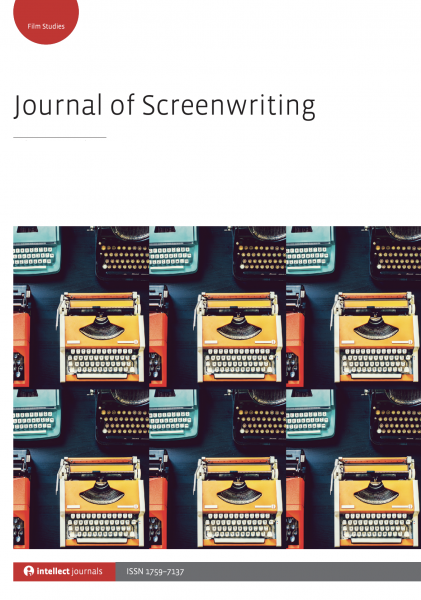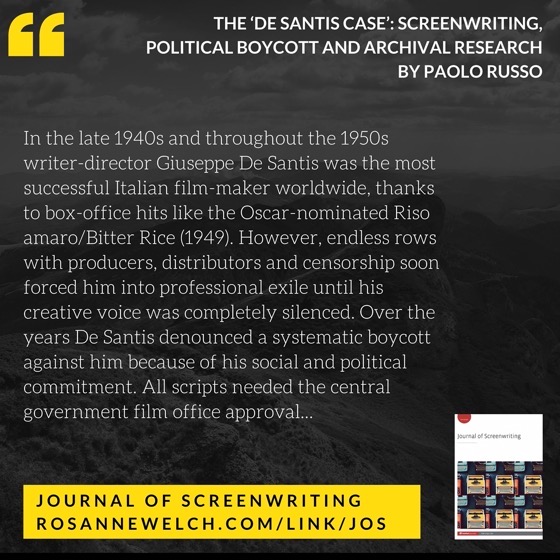Highlighting the articles in the past editions of the Journal of Screenwriting, of which I am the Book Reviews Editor. Hopefully these abstracts will entice you to did a little deeper into the history and future of screenwriting. — Rosanne
In analyzing the script development of Grand Hotel (1932, Edmund Goulding), this article brings an insight into the workings of the classical studio system and the way screenwriting was organized and understood during this era. The protocols of story conferences that took place at MGM under the leadership of producer Irving Thalberg deliver an exhaustive picture of the whole process, from the first screen idea, to getting the rights for a novel, to the final discussions after the screening of a rough cut. The protocols deliver evidence of screenwriting as an ongoing work in progress that was done not by a single screenwriter, but by a group of film-makers, constantly discussing all elements of the production. The concerns of the participants of these conferences included more than just storytelling; they also focused on the emotional reactions of the audience and the presentation of stars. The criteria these decisions were based upon are not ‘rules’ of storytelling, but reasonable assumptions about the audience’s reactions. Screenwriting within the studio system was not an ongoing fight between screenwriters and producers, but an ongoing discussion about every detail of a film, constituting a rather modern and democratic system of film development.
The Journal of Screenwriting is an international double-blind peer-reviewed journal that is published three times a year. The journal highlights current academic and professional thinking about the screenplay and intends to promote, stimulate and bring together current research and contemporary debates around the screenplay whilst encouraging groundbreaking research in an international arena. The journal is discursive, critical, rigorous and engages with issues in a dynamic and developing field, linking academic theory to screenwriting practice.
Get your copy and subscription to the Journal of Screenwriting Today!
* A portion of each sale from Amazon.com directly supports our blogs
** Many of these books may be available from your local library. Check it out!


![01 Left Out Of The History Books from Concord Days: Margaret Fuller in Italy [Video]](https://rosannewelch.com/wp-content/uploads/2021/07/rmw-concord-day-2021-fuller-rome.jpg)






